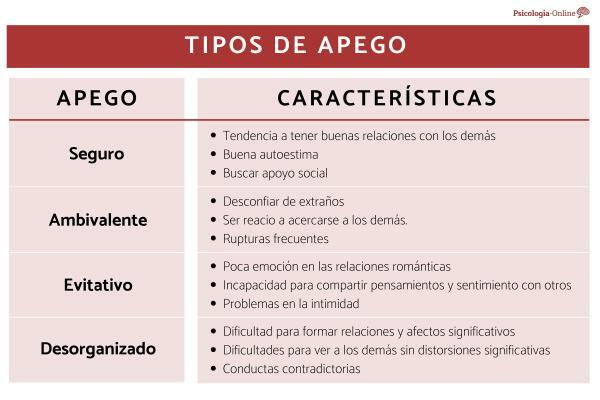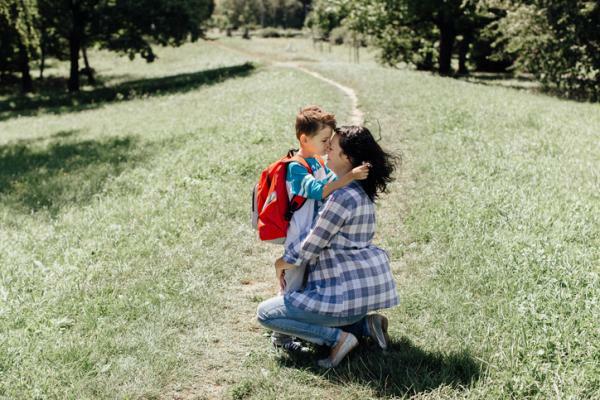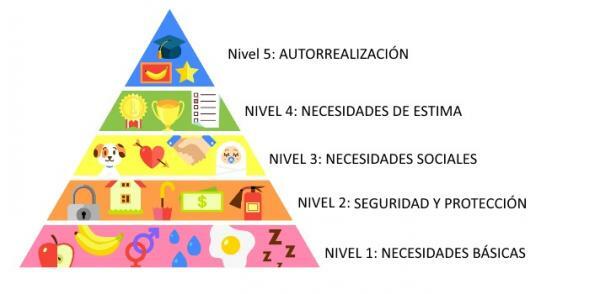
Our attachment style affects our life, from the choice of our partner to how our relationships progress. Because of this, recognizing our attachment style can help us understand our strengths and weaknesses in relationships. Attachment is established in childhood with our parents or caregivers and continues into adulthood as a working model for relationships. The concept of attachment comes from the attachment theory that emerged in the 60-70s.
Currently, psychologists recognize 4 main types of attachment that have consequences on how we relate throughout our lives. In this Psychology-Online article, we explain the types of attachment and their consequences.
Index
- What is attachment?
- Child attachment and its consequences
- Secure attachment
- Ambivalent attachment
- Avoidant attachment
- Disorganized attachment
What is attachment?
Attachment is a special emotional relationship that involves an exchange of comfort, care and pleasure. The study of attachment has its origin in Freud's theories about love, but John Bowlby is the author considered to be the father of the
Bowlby shared the psychoanalytic view that early experiences in childhood they are important for the development and behavior of the person throughout their life
Additionally, Bowlby believed that attachment had an evolutionary component, aiding survival. "The propensity to make strong emotional bonds with particular individuals is a basic component of human nature." For example, we find attachment in the special mother-child bond.

Child attachment and its consequences.
This study consisted of observing how children between 12 and 18 months reacted when they were left alone for a short time and when they were reunited with their mothers.
This study had 5 sequences to examine:
- Mother and son are alone in the room.
- The child explores the room under the supervision of the mother.
- A stranger enters the room, talks to the mother, and approaches the child.
- The mother leaves the room silently.
- The mother returns and comforts the child.
Based on these observations, Ainsworth concluded that there was three types of attachment: secure, ambivalent-insecure and avoidant-insecure attachment. Later, researchers Main and Solomon added a fourth attachment style known as disorganized-insecure. Numerous studies have supported Ainsworth's finding and subsequent research has revealed that early attachment styles can influence behavior in adult life.
Secure attachment.
One of the types of attachment is secure attachment and it manifests itself differently depending on the life period in which we are.
Secure attachment in childhood
The characteristics of secure attachment in childhood are:
- Being able to separate from parents, that is, they can be cared for by other people and accept their comfort to some extent. Although they prefer their parents to strangers.
- Seek comfort from parents when scared.
- Visibly upset when parents leave and happy when they return after not seeing them for a while. The contact initiated by a parent is easily accepted by children with a secure attachment and, therefore, they greet them happily upon their return.
Parents of securely attached children tend to play more with their children. In addition, these parents react more quickly to the needs of their children and are generally more receptive to their children than the parents of insecure children. Studies have shown that securely attached children are more empathetic during the post-childhood stages. In addition, they are also less disruptive, aggressive, and more mature than children with ambivalent or avoidant attachment styles.
To form a secure link with parents it is normal and expected, but it does not always happen. Researchers have found a number of factors that contribute to the development of a secure attachment, particularly the responsiveness of a mother to the needs of her baby during the first year of lifetime. Mothers who respond unconsciously or who interfere with the child's activities tend to raise babies who explore less, cry more, and are more anxious. Mothers who constantly reject or ignore their baby's needs tend to raise children who try to avoid contact.
Secure attachment in adulthood
The characteristics of secure attachment in adulthood are:
- Tendency to have good relations with others, durable and reliable.
- Tendency to have a good self-esteem.
- Enjoy intimate relationships.
- Seek social support.
- Feel good when you share feelings with your partner and friends.
In one study, women with a secure attachment style were found to have more positive feelings about their adult romantic relationships than other women with insecure attachment styles.

Ambivalent attachment.
One of the types of insecure attachment is ambivalent. It manifests itself differently in childhood than in adulthood. Next, we will see its main characteristics in each case.
Ambivalent attachment in childhood
In childhood, ambivalent attachment is characterized by:
- Be extremely suspicious, they distrust strangers.
- Become very stressed if the parents leave.
- When his parents return, he finds no comfort in them. In some cases, even contact with their parents is rejected or violence is used to drive them away.
Ambivalent attachment is not very common and has been associated with low maternal availability. As these children grow older, teachers describe them as insecure and overly dependent.
Ambivalent attachment in adulthood
In adulthood, the characteristics of an ambivalent attachment are:
- Being reluctant to approach others.
- Worry about whether your partner loves you. Which leads to frequent breakups because the relationship feels cold and distant.
- Great grief when the relationship breaks down.
Some authors speak of another pathological pattern in which adults with ambivalent attachment cling to young children as a source of security.
Avoidant attachment.
Another type of attachment is avoidant attachment. Let's see what are the consequences of this attachment in childhood and adulthood.
Avoidant attachment in childhood
The characteristics of avoidant attachment in childhood are:
- Avoid parents. This avoidance becomes especially noticeable after a period of absence of the parents.
- Parents' attention may not be turned away, but contact or comfort is not sought from them.
- Show little or no preference for parents over strangers.
Avoidant attachment in adulthood
On the other hand, the characteristics of an avoidant attachment in adulthood are having problems with intimacy, expressing little emotion in romantic relationships or social and little distress when they are over and inability to share thoughts and feelings with others.
An avoidant attachment adult often avoids intimacy with excuses or may fantasize about other people during sex. People with this attachment are more likely to have casual sex.

Disorganized attachment
We continue talking about types of attachments, specifically, the disorganized attachment. Its characteristics are different in boys and girls than in adults.
Disorganized attachment in childhood
In childhood, the characteristics of a disorganized attachment are mix of behaviors avoidant and resistant towards parents. Which shows the lack of clear attachment behavior.
- Appearing dazed or confused in the presence of parents.
- Assume a parental role, acting as caretakers of the parents.
Some authors proposed that inconsistent behavior on the part of parents could favor this type of attachment. Parents who act as figures of fear and reassurance for a child contribute to a disorganized attachment style, as he is so comforted and frightened by the parent himself that he is confused.
Disorganized attachment in adulthood
A disorganized attachment in adulthood is characterized by the following aspects.
- Having difficulty seeing others without significant distortions.
- Significant dysfunction in your ability to form emotionally significant relationships and affections.
- Their relationships tend to be volatile.
- Some people with personality disorders have a disorganized attachment style.
This article is merely informative, in Psychology-Online we do not have the power to make a diagnosis or recommend a treatment. We invite you to go to a psychologist to treat your particular case.
If you want to read more articles similar to Types of attachment and their consequences, we recommend that you enter our category of Emotions.
Bibliography
- Duarte Mendoza, K. D. (2019). Disorganized attachment, its impact on the emotional development of a child (Bachelor's thesis, BABAHOYO: UTB, 2019).
- Gago, J. (2014). Attachment theory. The link. Agintzari S. Coop. of Social Initiative. Basque Navarra School of Family Therapy.
- García de León, S. (2019). Attachment Behavior: Its Various Factors: A New Kind of Attachment? Spanish Academic Editorial.


